#forgotten gialli
Explore tagged Tumblr posts
Text
Blu-ray Review: Forgotten Gialli: Volume 3
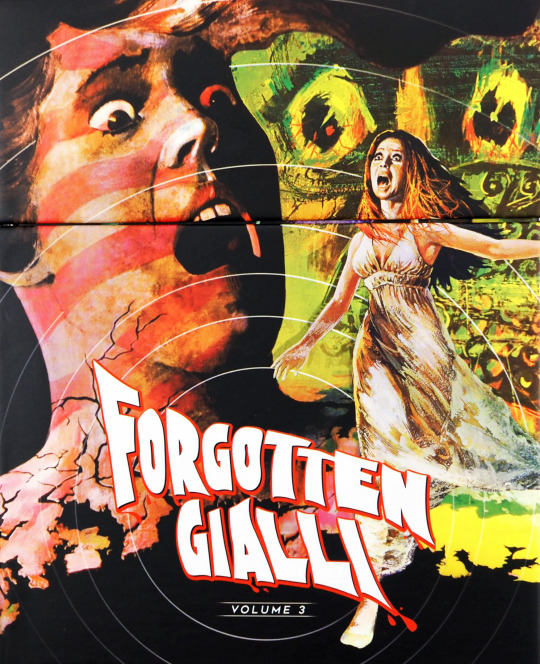
Vinegar Syndrome launched its first Forgotten Gialli Blu-ray box set less than a year ago, but the powerhouse distributor is already on the third volume of obscure giallo (European murder-mystery) films. The latest installment features 1972's Murder Mansion (also known as The Mansion in the Fog), 1975's Autopsy (also known as The Victim), and 1977's Crazy Desires of a Murderer (also known as The Morbid Vices of a Housekeeper).
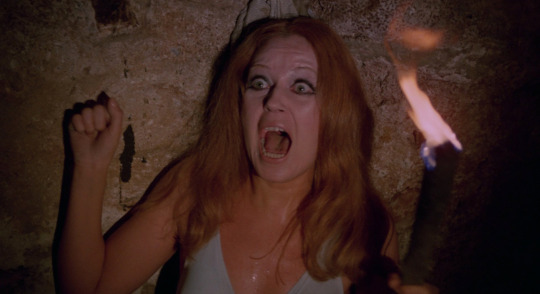
Murder Mansion is a Spanish-Italian co-production that only classifies as a giallo by a rather liberal definition. It starts out slow; the first line of dialogue isn't spoken until six minutes in, after the opening title sequence and a lengthy driving scene. When the night is consumed by fog, a group of strangers from different backgrounds seek refuge in an old mansion next to an abandoned village where local legends say vampires once resided. It's not long before they suspect that ghosts have risen from the nearby graveyard.
Written by Luis G. de Blain and Antonio Troiso (Beyond the Door), the murder-mystery aspects are more Agatha Christie - or even Scooby-Doo, given the cartoonish reveal - than giallo, lacking many of the subgenre's hallmarks; but even more so director Francisco Lara Polop seems to be drawing influence from gothic horror in both approach and execution. The chilling atmosphere is palpable as soon as the fog rolls in, but the first body doesn't pop up until nearly an hour into the 86-minute film. The last act makes admirable attempts to compensate with scares and shocks.
Murder Mansion has been newly restored in 4K from its 35mm original camera negative. It includes the original Spanish language audio with newly translated English subtitles as well as the English and Italian dubs. The disc includes a 20-minute interview with actress Evelyn Stewart (The Psychic). While she admittedly doesn't remember the specifics about much of the production, she recalls working with the special effects and explains her use of a stage name. She’s noticeably pleased by the film, particularly Polop's direction.
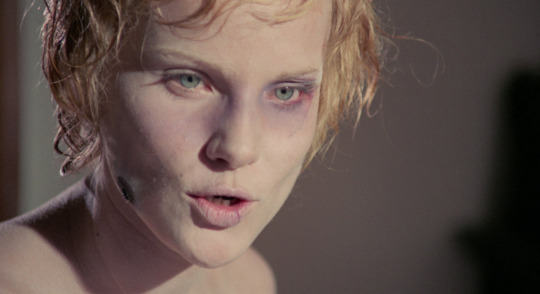
The most well-known title among the three Forgotten Gialli sets, Autopsy opens with a montage of grisly suicides plaguing Rome, purported to be caused by sun spots. A young, female pathologist (Mimsy Farmer, Four Flies on Grey Velvet), serendipitously writing a thesis on the differences between simulated and authentic suicides, teams up with an epileptic race car driver-turned-priest (Barry Primus, Boxcar Bertha) following the alleged suicide of his sister to investigate.
Directed by Armando Crispino (The Dead Are Alive), who co-wrote the script with Lucio Battistrada, the Italian giallo is convoluted even by the subgenre's standards. It's also shockingly sleazy, from a misogynistic coroner to maddening visions of being molested by cadavers. The film is uneven in both tone and pacing and bloated at 100 minutes, but it ends on a high note with a memorable finale. On the whole, it's more unnerving than most gialli, due to the taboo buttons it pushes as well as the hints of surrealism in which Crispino indulges. A score by Ennio Morricone (The Thing, The Good the Bad and the Ugly) certainly doesn't hurt.
Autopsy has been newly restored in 2K from its 35mm original camera negative. It includes both the English and Italian (with newly translated English subtitles) mono soundtracks. It offers a variety of special features: a featurette on Crispino consisting of 38 minutes of insight from the late director's son, Francesco Crispino; a 10-minute interview with Francesco Crispino, who dissects various versions of the film and discusses his father's influences; an 11-minute interview with editor Daniele Alabiso conducted by Francesco Crispino, in which they examine the film's peculiar rhythm; an introduction by the director from a screening; alternate Italian titles and credits; and the theatrical trailer.
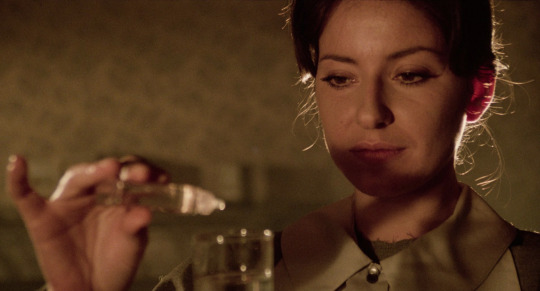
If only Crazy Desires of a Murderer's plot was as stimulating as its traditionally verbose giallo title. It centers around an affluent, globe-trotting countess, Ileana (Isabelle Marchall, Black Emanuelle). She returns to her familial castle with new friends she met while traveling in China, who unwittingly used her as a drug courier. Meanwhile, her traumatized half-brother is kept locked away in the basement. But those are the least of her problems once someone starts murdering the inhabitants of the castle.
Aesthetically, this one most closely resembles a traditional giallo. What the drab castle lacks in color palette, director Filippo Walter Ratti and cinematographer Gino Santini (Django the Bastard) make up for with interesting camerawork. There's also ample gore, as the killer's modus operandi involves removing the victims' eyes, and heavy doses of sleaze, although it pales in comparison to Autopsy. But writer Ambrogio Molteni (Black Emanuelle) employs an Agatha Christie-esque sleuth (Corrado Gaipa, The Godfather) to solve the mystery, and the abundance of clunky procedural scenes weigh down the film.
Crazy Desires of a Murderer has been newly restored in 4K from its 35mm original camera negative with Italian mono audio and newly translated English subtitles. The disc includes a 15-minute interview (in Italian with subtitles) with actor Giuseppe Colombo (who more notably went on to produce The Stendhal Syndrome and other Dario Argento productions). He candidly recalls frequent disagreements with Ratti and other drama that befell the production.
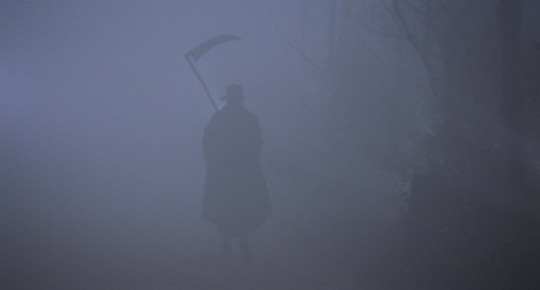
While the films are hit or miss, the experience of unearthing them is always a thrill. Even the packaging is great, with each film in its own individual Blu-ray case with reversible artwork, all of which are housed inside a sturdy box (limited to 6,000). Between Forgotten Gialli and the forthcoming Home Grown Horrors, I hope Vinegar Syndrome never stops spoiling us with box sets of hidden gems.
Forgotten Gialli: Volume 3 is available now on Blu-ray via Vinegar Syndrome.
#vinegar syndrome#giallo#autopsy#murder mansion#crazy desires of a murderer#forgotten gialli#italian horror#italian film#dvd#gift#review#article#horror#ennio morricone#mimsy farmer#evelyn stewart
20 notes
·
View notes
Note
Excuse Me what is pulp and why is it importan?
Good question! And probably one I should have answered sooner. Time to put on the historian hat for this one.
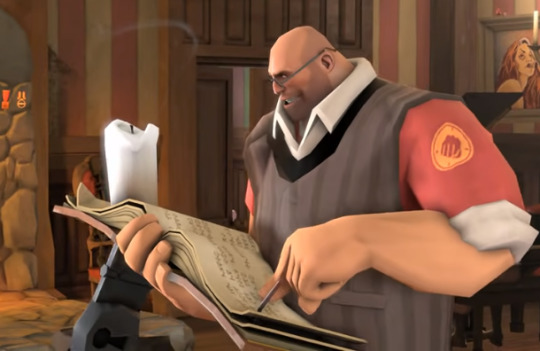
"Pulp" is a term used mainly to describe forms of storytelling that sprang out or were dominant in 20th century cheap all-fiction American magazines from the 1900s to the 1950s. The pulp magazine began in 1896, when Frank Munsey's Argosy magazine, in order to cut costs, dropped the non-fiction articles and photographs and switched from glossy paper to the much less expensive wood pulp paper, hence the name. The pulp magazines would mainly take off as a distinct market and format in 1904, when Street & Smith learned that Popular Magazine, despite being marketed towards boys, was being consumed by men of all ages, so they increased page count and started putting popular authors on the issues.
It was specifically the 1905 reprint of H.Rider Haggard's Ayesha that not only put Street & Smith on the map as rivals to Argosy, but also inspired other companies to start publishing in the pulp format. Pulps encompassed literally everything that the authors felt like publishing. Westerns, romance, horror, sci-fi, railroad stories, war stories, war aviation stories. Zeppelins had a short-lived subgenre. Celebrities got their own magazines, it was really any genre or format they could pull off, anything they could get away with.
Nowadays, although they came quite late in it's history, the American pulps are most famous for it's "hero pulps", characters like The Shadow and Doc Savage that are viewed as a formative influence on comic book superheroes. The pulp magazines in America lasted until the 1950s, when cumulative factors such as paper shortages, diminishing audience returns and the closing of it's biggest publishers led to it dying off, although in the decades since there's always been publishers calling their magazines pulp. That's the American pulp history.

But pulps are a phenomenon that spans the entire world and has a much bigger history to it, because pulps have become synonymous with cheap fiction magazines and those have a much bigger history. In America, before the pulps, you had the dime novels, the direct predecessors of the pulps, as well as the novelettes. England had it's penny dreadfuls and story papers, and continued publishing pulp-format magazines past the American 1950s, and that's how we got Elric of Melniboné. France and Russia arguably got to it first with it's 1800s coulporters, chapbooks and particularly the feuilletons which lasted all the way to the 20th century and created characters such as Arsene Lupin, Fantomas and The Phantom of the Opera. The Germans published pulp under the name hefteromane. Japan also published pulp magazines both original as well as imported, and the current "light-novel" phenomenon started off as an equivalent of pulp magazines (it's even on the Wikipedia page). China has wuxia, Brazil has cordel, Italy has gialli. There were Indian, Persian, Ethiopian, Canadian, Australian pulps and much more. Look anywhere in the world and you'll find examples of "pulp" happening again and again, under different circumstances and time periods.
Even if we stick to American fiction, it's impossible to state that all pulp heroes must come from the 1900s-1950s pulp magazines, because that forces us to exclude some of the most popular pulp heroes like Indiana Jones, Green Hornet, Rocketeer and The Phantom. Pulp may have once been a term meant to refer to pulp magazines exclusively, but it's morphed and lost structure and it's become the closest thing we have to a general umbrella term that allows us to try and consolidate these under a shared history. It's a lot, as you can see, and it's why several pulp historians that broaden their scope outside of 1930s American fiction have adopted Roland Barthes's definition of pulp as "A Metaphor With No Brakes In It", which is still the closest thing to a true working definition we have.

Why is it important? You tell me. I don't like to stake claims about stuff being "important", everyone's got their own priorities in life. Surely a lot of people would scoff at the idea of old populist fiction published in what was functionally equivalent to toilet paper having any sort of "importance". On the other hand, some people definitely want to talk big about the pulps as a cultural bedrock of fiction, something that's baked into the lifeblood of all fiction as we currently know it. Which it is, mind you, but I don't like to talk about pulp fiction's value being derived mainly from merely the things it inspired.
There is definitely a historical importance to be had in cataloguing them. According to the US's foremost pulp researcher Jess Nevins, 38% of all American pulps no longer exist, and 14% of all American pulps survive in less than five copies. Many libraries have very scant, if any, records on them, many collectors are hard to locate and are uncooperative when it comes to sharing information and letting outsiders view their collections. A lot of them are bound up in legal complications that prevents them from taking off in the public domain, and a lot of them ARE public domain but are completely inacessible as research material. And that's the American pulps, foreign pulps have fared far worse in posterity, with records inaccessible to people unfamiliar with the language or locations, many existing merely in mentions on decades-old records, and hundreds if not thousands of them being completely gone beyond recovery or recall.
Gone, dead, wasted, destroyed. They can't be found in barbershops or warehouse or bookstores, not even in antique stores. Hundreds, thousands of characters, stories and creators, gone. Time and posterity have crushed them to dust, forgotten and ignored by their successors. Unfettered by pretenses of respectability that repressed their glossier counterparts, in packages meant to be destroyed after reading, proudly announcing itself as trash. Things that should have never even lasted as long as they did have died many times now. It's heroes peripherical shapeshifters, nearly all of whom seem dead, quite dead, as dead as fictional characters can possibly be.
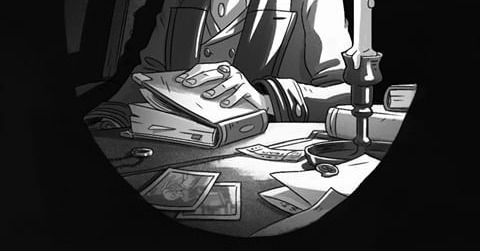
But they do not die forever. Many of them have, maybe most of them have, but many of them linger on.
"The strange red flickering of 1930’s fiction seems distant now. You hold in your hand the product of a time too remote to recall, and feel a slow stir of wonder. The smell of pulp pages, an illustration, an advertisement, these fragile things mark the slow hammering of time and display what it has done. About you are today’s machines, today’s shadows.
Outside the window, leaves hang against the sky, as did leaves during the 1930’s. The sound of voices are no different then than now. You hold the magazine and feel something quite delicate slipping past. These solid forms surrounding you are all insubstantial. Time’s hammer will also pass across them, leaving little enough behind." - Spider, by Robert Sampson
Many of the things people call dead are just things that have been sleeping for a while or haven't had the chance to be born. Pulp fiction is dead on the page, inert, unless your imagination breathes live to it, and every now and then, one way or another, these characters dig themselves out of dustbins. Maybe it's a brief revival, maybe it's a successful reboot. Maybe they find publishers, or maybe the public domain allows them to find new life. Maybe new creators do interesting things with them, and maybe, just maybe, they live again because some won't shut up about them online. Some curious impulse led you to me, did it not?
We all have our Frankensteins to obsess over, and these are some of mine. As someone who's lived a life perpetually restless over pursuit of knowledge, pulp has lured me like a moth to flame, because I literally never run out of things to discover within it, I never run out of possibilities. As the years pass and the public domain starts being more and more open to the public, more and more narrative real state is brought forth for writers and artists and creators to play around.
Pulp is the dark matter of fiction, the uncatalogued depths of the ocean, the darkest recesses of space. It's the box of your grandfather's belongings, the treasure you find in an attic, a body part sticking out from an old playground. It's the things that don't work, don't succeed, the things that don't fit, that are out of place. That shouldn't live and succeed, and did so anyway. The things that slither in the cracks, the shadows behind the curtain.
Aren't you interested in peering on what's behind the curtain?

The exquisite workmanship of the head, of a pre-pyramidal age, and the hieroglyphics, symbols of a language that was forgotten when Rome was young–these, Kane sensed, were additions as modern to the antiquity of the staff itself as would be English words carved on the stone monoliths of Stonehenge.
As for the cat-head–looking at it sometimes Kane had a peculiar feeling of alteration; a faint sensing that once the pommel of the staff was carved with a different design. The dust-ancient Egyptian who had carved the head of Bast had merely altered the original figure, and what that figure had been, Kane had never tried to guess.
A close scrutiny of the staff always aroused a disquieting and almost dizzy suggestion of abysses of eons, unprovocative to further speculation. - The Footfalls Within, by Robert E Howard, quoted by Stuart Hopen’s The Mythic American Culture
463 notes
·
View notes
Text
Why Dario Argento’s Deep Red remains a trashy masterpiece
A sweet children’s song, a Christmas tree in a cosy domestic setting, silhouettes on the wall showing one person viciously stabbing another, and then a blood-stained knife falling to the floor, by the shoes of a standing child. This is the prologue to Dario Argento’s Deep Red, and also its primal scene – the source of a trauma that keeps resurfacing over a decade later. It is also a piece of shadow play in the theatre of a disturbed mind, leading us to draw certain connections and inferences, while being open to more than one interpretation.
Indeed, much of Deep Red will involve the discussion and reading of minds and art. “Really, that’s good, very good,” pianist and music teacher Marcus Daly (David Hemmings) tells jazz band in the present scene that immediately follows the past prologue. “Maybe a bit too good. Too clean, yes, too precise. Too… formal. It should be more trashy.” Here Argento may as well be laying out the aesthetics of his own film, which comes meticulously crafted, operatic even in its baroque mannerisms, but which is nonetheless aiming low.
For the director is still working within the trashy sensationalism of the giallo genre in which he had already established his name and signature style with the ‘animal’ trilogy The Bird With the Crystal Plumage, The Cat O’ Nine Tails and Four Flies on Grey Velvet. Deep Red was originally intended to belong to this series, and its working title was the more bestial-sounding The Sabre-Toothed Tiger. But even if the film was briefly rereleased in America during the early ’80s as The Hatchet Murders, Deep Red eventually stuck.
After recognising that there is a “twisted mind” with “perverted, murderous thoughts” in her audience, Lithuanian telepath Helga Ulmann (Macha Méril) is later killed in her apartment. Her screams draw Marcus, her upstairs neighbour, to the scene, but he is too late. When questioned by the police he becomes convinced that one of the macabre pictures he saw in passing on Helga’s walls is now mysteriously missing. “Maybe,” fellow pianist Carlo Manganiello (Gabriele Lavia) suggests to Marcus, “that painting was made to disappear because it represented something important.” Yet as Marcus tries to remember, the mysterious killer wants a past crime to remain forgotten, and commits many more murders to cover a bloody trail leading all the way back to the primal scene.
It is not just a painting that must be found, but a supposedly haunted house, and a missing window (with a missing room behind it), and various infantile reproductions (whether on paper or fresco) of that first killing, all to piece together the identity of the killer. Barely helped by the incompetent police, Marcus reluctantly joins forces with ambitious journalist Gianna Brezzi (Daria Nicolodi), and as they become both investigative partners and lovers, the chauvinistic pianist learns the price of underestimating women. Much of this couple’s relationship was excised by Argento himself for the film’s original 100-minute theatrical version, but has been reinstated for a 126-minute edit whose additional scenes have never been dubbed into English.
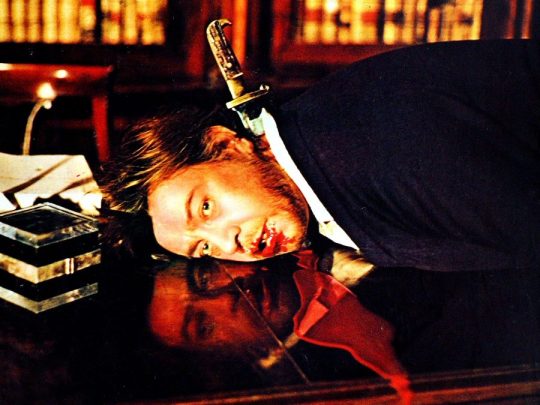
It is well worth watching them. For while these scenes’ comic tone may sit oddly with the rest of the film, there is something about the sight of Marcus sunk into the broken passenger seat of Gianna’s barely functioning little car, that perfectly encapsulates the folly in Marcus’s posturing masculine superiority. Here it is Gianna who is both positioned above her male passenger, and very much in the driver’s seat – and from this a more general lesson can be drawn about the film’s inversion of gender norms, at least according to the sexist Marcus. “Men and women are different,” he will tell Gianna, “Women are delicate, fragile.” Yet the film will repeatedly challenge his assumptions and prejudices about woman’s capabilities.
Deep Red was a transitional film in Argento’s career, bridging the gap between his earlier gialli and his later leanings towards the supernatural in features like Suspiria, Inferno and Phenomena. Indeed, much as Helga has the uncanny ability to read minds, in one scene here, her colleague Professor Giordani (Glauco Mauri) describes the telepathic powers of insects, and in so doing, practically predicts a key point of Phenomena’s plotting, a good decade before it was made. All the grotesquely bloody murders of Argento’s previous detective stories are here present and correct, while this is the first in a long musical collaboration with Italian prog rockers Goblin and their front man Claudio Simonetti.
As both Marco and the killer try to reconstruct the primal scene in their different ways – the one to solve a crime, the other to recreate its circumstances – Argento pulls off a genuine coup de cinéma by revealing the killer’s face remarkably early in the film, but in such a way that if you do not know what you are looking for, you will not see it, even though Argento plays entirely fair in the relevant sequence and the face is most certainly there. This film is very good, but also distinctly trashy, as the elegant art gallery in a Helga’s home hides a cleaver-wielding presence determined to paint and repaint everything deep red.
Deep Red is released on Limited Edition 4K UHD Blu-ray, DVD and soundtrack CD from 25 October via Arrow Film.
The post Why Dario Argento’s Deep Red remains a trashy masterpiece appeared first on Little White Lies.
source https://lwlies.com/articles/deep-red-dario-argento-giallo/
2 notes
·
View notes
Photo










I boschi dei Nebrodi e dell’ Etna in autunno.
Lentamente, dal sottobosco sale in lunghe spirali la nebbia, si aggrappa ai deboli raggi di sole che filtrano tra le ingiallite foglie e su essi risale fino a vedere finalmente il cielo grigio e silenzioso ed a questo punto, in lunghe volute, sparisce confondendosi con le nubi. Le chiome degli alberi hanno perso il loro verde cupo e diventano fiamme vegetali con i loro rosso-mattone, rosso-cinabro, rosso-aranciato o i loro colori d’ocra sfumati da un delicato verde e luminosi gialli. Le foglie vestono il loro splendente sudario per tornare alla terra a ridarle il nutrimento con cui l’albero è vissuto. Alla madre i figli ridanno l’amore avuto in un equilibrio continuo che noi uomini, bambini capricciosi ed egoisti, abbiamo dimenticato. La terra. ora di un profondo color oscuro, ora di un bianco abbagliante, osserva i rami che si stanno svestendo di colore a cui il vento con le foglie ha rubato le parole e la voce. La terra umida e grassa, segue lo sfrecciare di merli e colombi, osserva le onde di grigie nuvole che coprono di monotonia l’azzurro sottile del cielo. Tutto appare come un tango lento che il tempo suona e che terra e il bosco danzano, intimamente abbracciati, perduti ognuno nell’amore dell’altro.
Slowly, from the undergrowth the fog rises in long spirals, clings to the weak rays of sun that filter through the yellowed leaves and climbs up to finally see the gray and silent sky and at this point, in long swirls, it disappears, mingling with the clouds. The crowns of the trees have lost their dark green and become vegetable flames with their red-brick, red-cinnabar, red-orange or their ocher colors tinged with a delicate green and bright yellow. The leaves dress their shining shroud to return to the earth to give it back the nourishment with which the tree lived. The children give back to the mother the love they had in a continuous balance that we men, capricious and selfish children, have forgotten. The earth. now of a deep dark color, now of a dazzling white, observe the branches that are stripping of color from which the wind with the leaves has stolen the words and the voice. The moist and greasy earth follows the whizzing of blackbirds and doves, observes the waves of gray clouds that cover the subtle blue of the sky with monotony. Everything appears like a slow tango that time plays and the earth and the woods dance, intimately embraced, each lost in the love of the other
19 notes
·
View notes
Photo

treated myself to some @vinegarsyndrome FORGOTTEN GIALLI VOL. 2 & 3 https://www.instagram.com/p/CPauT_TlAKt/?utm_medium=tumblr
2 notes
·
View notes
Text
Blu-ray and DVD releases: April 2020
Here is our selection of the Blu-ray and DVD releases being released in the USA in April 2020. For movies that we have covered on our site, there are links for further information. Otherwise, click on the Amazon link(s).
April 7th, 2020:
Camp Cold Brook (Shout Factory Blu-ray) Amazon.com
Camp Cold Brook (Shout Factory DVD) – Amazon.com
Knives and Skin (Shout Factory Blu-ray) – Amazon.com
Superna…
View On WordPress
#2020#Amazon#April#Blu-ray#Dark Force#discs#DVD#Forgotten Gialli#horror#releases#Shout! Factory#USA#Vingegar Syndrome
0 notes
Text
The Girl in Room 2A

Is every Italian thriller a giallo? Vinegar Syndrom released William L. Rose’s THE GIRL IN ROOM 2A (aka LA CASA DELLA PAURA, 1974, Shudder) in its FORGOTTEN GIALLI series, but I’m hard-pressed to find many similarities to giallo classics like BLOOD AND BLACK LACE (1964) or THE BIRD WITH CRYSTAL PLUMAGE (1970). It doesn’t have the super-saturated dark colors of those films but rather is shot in bright, sunshiny EastmanColor. The score, though eclectic, doesn’t have the brooding intensity of most films in the genre. There’s no past trauma motivating the action. It’s really more like Nancy Drew with naked bosoms. An unjustly imprisoned ex-convict (Daniela Giordano) is sent to room with a widow (Giovanna Galletti) and her hunky if emotionally backwards son (Angelo Infanti). After having strange nightmares about a menacing figure in a red hood, she meets a man (Jack Scanlon) whose sister committed suicide after staying in the same room, so they have sex, because she has a nice body the filmmakers want to show off. This all ties into a cult led by Raf Vallone, who’s out to punish people for their sins, sort of. There’s only one scene that comes within spitting distance of a classic giallo, when Giordano sneaks into Infanti’s workroom, where she’s surrounded by mannequin parts, but it’s hardly as stylish as something Mario Bava or Dario Argento would have done. Perhaps it falls short in that area because it was made by Americans (Rose and producer Dick Randall) who specialized in exploitation pictures. The film starts out as a diverting little mystery only to get rather silly at the end. When the cult kidnaps Giordano, Scanlon rides to the rescue in a Volkswagen Beetle, which just looks funny. And the skinny Scanlon keeps beating up the baddies while his muscular buddy (peplum star Brad Harris) looks on. The strangest thing about the film, however, is the fact that it’s mostly dubbed (poorly) into English, but there are scenes in Italian in which the voices sound very different from those in the dubbed version. Vinegar Syndrome has advertised their release as the most complete version of the film in existence (and if that excites you, let’s hope they never uncover the original cuts of GREED or THE MAGNIFICENT AMBERSONS, for fear that might kill you). I’m guessing the American version that played mostly at drive-ins and in grindhouses had been cut, and no dubbed version of those scenes exists.
0 notes
Text
Blu-ray Review: Forgotten Gialli: Volume 1

One of the most reliable distributors when it comes to unearthing obscure genre films, Vinegar Syndrome has released Forgotten Gialli: Volume One, a Blu-ray box set containing a trio of giallo - or, European murder-mysteries - that have never received distribution in the U.S.: 1973's The Killer Is One of 13, 1975's The Police Are Blundering in the Dark, and 1978's Trauma.
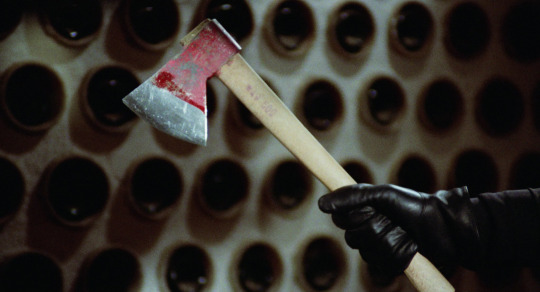
The Killer Is One of 13 is a Spanish giallo by way of Agatha Christie. Lisa Mandel (Patty Shepard, Slugs) invites a collection of acquaintances to her elegant, isolated home for reasons unknown to the guests. As she reveals over dinner, it's the second anniversary of her husband's mysterious passing, so she has gathered 13 people who may have benefited from his death, convinced one of them is responsible.
Despite the very specific title, there are more than 13 suspects when you factor in everyone; from guests to family members to the help. Director/co-writer Javier Aguirre (Count Dracula’s Great Love) and co-writer Alberto S. Insúa (Count Dracula’s Great Love) do an admirable job painting each character as a potential culprit, as everyone has both motives and flaws. However, as is often the case with ensemble murder-mysteries, it's difficult to keep track of the ancillary characters, some of whom are barely developed.
Far more restrained than its Italian brethren, the film's pacing is rather uneven. It's heavy on exposition throughout the first two acts, but the intriguing mystery drives it until the murders begin. That doesn't occur until 63 minutes into the 95-minute film, leading to an unrelenting, if rushed, final act. The big reveal isn't all that surprising if you pay attention to the clues, but it's not dissatisfying.

Cinematographer Francisco Fraile's (Dr. Jekyll vs. The Werewolf) ambitious camerawork - almost always roving or zooming - provides a kineticism to offset the long stretches of dialogue, even if focus is occasionally soft. A propulsive soundtrack would have helped further, but instead Alfonso Santisteban's (The Mummy’s Revenge) score is often hokey.
In addition to Shepard, the cast features several faces that may be familiar to Eurocult enthusiasts. Spanish character actor Simón Andreu (Beyond Re-Animator) plays a smug playboy; American expat Jack Taylor (The Ninth Gate) plays as an unappreciated artist; Spanish cinema royalty Carmen Maura (Women on the Verge of a Nervous Breakdown) has an early role as the wife of an unstable older man; and Spanish horror legend Paul Naschy (The Werewolf vs. The Vampire Woman) has a small part as the chauffeur.
The Killer Is One of 13 has been newly restored in 2K from its 35mm original negative. The disc includes an audio commentary by film critic and Diabolique magazine editor-in-chief Kat Ellinger. Since information on the production is scarce, she contextualizes the film relative to the giallo subgenre, making for an interesting listen.
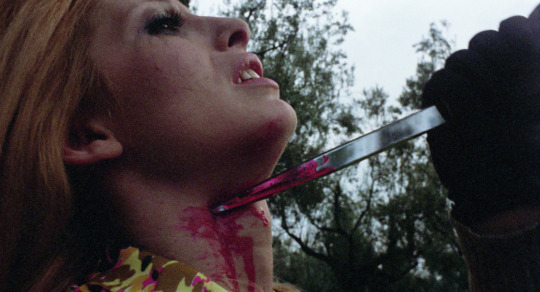
The Police Are Blundering in the Dark’s title is more interesting than the movie itself, as it seems director Helia Colombo (this being his sole credit) was blundering in the dark during the making of his Italian giallo. The cold open could be mistaken for a cliched '80s slasher: an attractive woman gets a flat tire and is chased by a killer through the woods, during which her blouse inexplicably opens as she runs, exposing her breasts before she's caught and stabbed with a pair of scissors.
It clocks in at a scant 87 minutes - rather brief by giallo standards - yet feels drawn out. The aforementioned woman is the latest in a string of murder victims, all of whom served as models for an impotent, wheelchair-bound photographer, Parisi. Giorgio D'Amato (Joseph Arkim), the journalist boyfriend of one of the victims, heads to Parisi's villa outside of Rome to investigate, learning that the photographer has invented a camera that captures its subjects' thoughts. This unexpectedly fantastical plot point is harnessed to solve the mystery a la Four Flies on Grey Velvet.
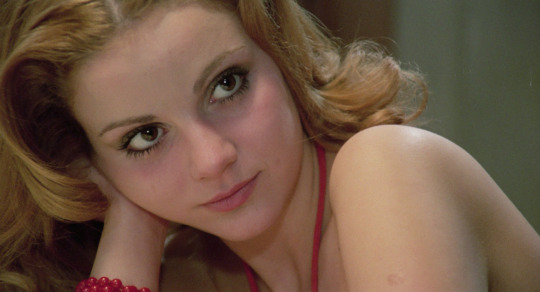
Despite being the most traditional giallo film of the trio included in the set, the picture fails to deliver on any of the pillars of the subgenre. After setting up a middling mystery, the midsection is bogged down by talky melodrama, while the eventual solution is preposterous. Beyond that, the kills are tame, Giancarlo Pancaldi's cinematography is pedestrian, and Aldo Saitto's score is forgettable.
The Police Are Blundering has been newly restored in 2K from its 35mm original negative. In lieu of an audio commentary, film historian and critic Rachael Nisbet provides a “historical audio essay.” It is exactly that; a breathless 16-minute amalgam of facts and critical analysis. It's thorough if dry, akin to reading a well-researched Wikipedia entry. A promotional image gallery is also included.
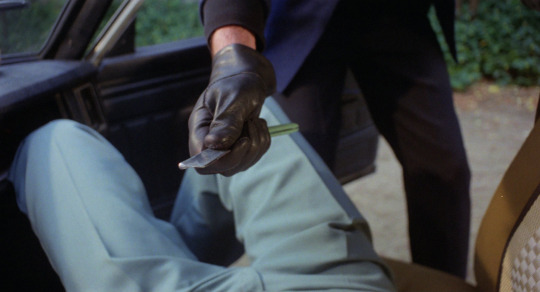
Not to be confused with Dario Argento's later giallo of the same name, Trauma is a Spanish giallo riff on Alfred Hitchcock's Psycho. It centers on Veronica (Ágata Lys, The Holy Innocents), who runs a quaint inn in rural Spain while caring for her unseen, handicapped husband. She's smitten with Daniel (Heinrich Starhemberg), a mysterious and charming author that checks in, to the point where she becomes visibly annoyed when other guests interrupt their flirting.
Director León Klimovsky (The Werewolf vs. The Vampire Woman) and writers Juan José Porto (Cross of the Devil) and Carlos Puerto (Satan's Blood) position the film as a mystery, but when a black-gloved assailant begins murdering the guests with a straight razor, the options for the killer's identity are quite limited.
The film is rather slow moving yet sleazy. Nearly every character, regardless of gender, sheds their clothing at some point. Cinematographer Pablo Ripoll (Tombs of the Blind Dead) captures it all with voyeuristic delight. Composer Ángel Arteaga (Frankenstein's Bloody Terror) crafted a Goblin-esque main title theme.
Starhemberg's position as executive producer of the film surely influenced the decision to (mis)cast him as the male lead. Beyond lacking chemistry with Lys, there are some unintentionally uncomfortable scenes in which he caresses a local boy. Antonio Mayans (Zombie Lake) plays an ill-fated hiker who takes refuge at the inn.

Trauma has been newly restored in 2K from its 35mm original negative. The disc includes an audio commentary by film historian Troy Howarth, who previously profiled the film in his 2019 book, So Deadly, So Perverse: Volume Three. Per usual, he takes a conversational approach to the track, which occasionally leads to tangents but ultimately provides a detailed analysis that digs into the history of giallo films.
Each of the discs is housed in its own Blu-ray case, and all three are packaged together in a box designed by Earl Kessler Jr. Limited to 5,000 units, it's available exclusively from Vinegar Syndrome. Having never been dubbed into English, the movies feature newly translated English subtitles to accompany the fresh scans.
A precursor to the slasher boom in the 1980s, the success of the giallo subgenre spawned a wide breadth of films, ranging from oft-discussed staples to hidden gems that barely saw a release beyond their theatrical debuts. With Forgotten Gialli, Vinegar Syndrome has breathed new life into three movies that fall squarely into the latter category. As it is subtitled Volume 1, I can only hope that more sets come to fruition.
Forgotten Gialli: Volume One is available now via Vinegar Syndrome.
#giallo#vinegar syndrome#the killer is one of 13#trauma#the police are blundering in the dark#dvd#gift#review#article#gialli#forgotten gialli#italian horror#spanish horror#paul naschy#earl kessler jr.#murder mystery
15 notes
·
View notes
Photo

Blu Review - Forgotten Gialli: Volume 2 (Vinegar Syndrome) Read More Here: https://www.horrorsociety.com/2021/01/18/blu-review-forgotten-gialli-volume-2-vinegar-syndrome/
0 notes
Photo
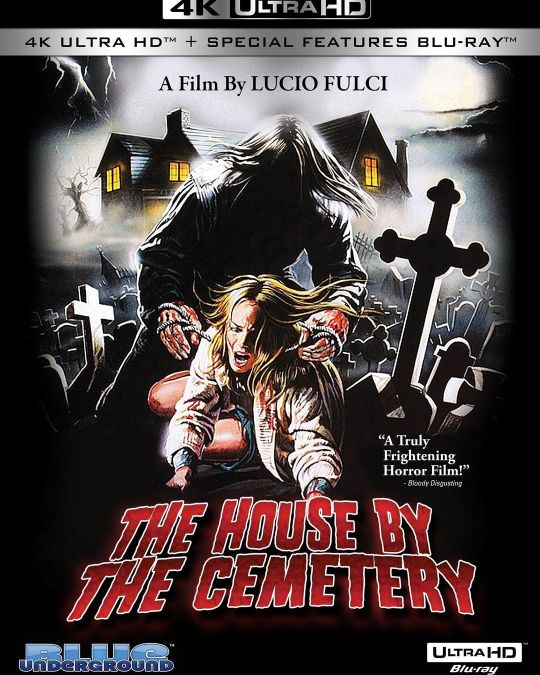
My top 10 4K/blu ray releases of the year. Part 1 of 2. 1. House by the Cemetery by Blue Underground. Hands down my favorite Fulci, and to see it get this level of love is wonderful. There is both a 2 disc 4K, and 3 disc blu ray edition, the 3 disc includes the intense yet beautiful score on CD. 2. The Black Cat by Severin, this is the unofficial conclusion to the Argento third mother trilogy (Suspiria, Inferno) written by Daria Nicolodi with additions by Luigi Cozzi. It’s a weird meta film that in someways serves as a better conclusion than Mother of Tears. 3. Forgotten Gialli Volume 1 & 2 by Vinegar Syndrome. These sets feature Gialli from Italy and beyond. A must for any Giallo or Italian horror enthusiast. Here is hoping we see a third one sooner than later. 4. Revenge by Second Sight. This was one of my favorite films of 2017, and then it was released on a very lackluster disc despite its critical reception. Thankfully Second Sight in the UK rectified this, and gave it the love it deserves. 5. Dawn of the Dead by Second Sight. I wasn’t going to have more than one release per company on this list but Second Sight took the world by surprise by putting out this 7 disc set that includes everything and more that you could possibly want. https://www.instagram.com/p/CJlml-Fl1H5/?igshid=1sjdrpjirma2e
0 notes
Text

Gonna advertise a bit for VS tonight. Apologies. I absolutely love their limited editions.



Their multi-film collections are beautiful and well-constructed (the artwork on this one isn’t beloved, but their previous collections like Forgotten Gialli and the Amityville Collection? Stunning), and I’m really digging the Scanner Cop duo pack:



Slipcovers within slipcovers. The next evolution 😂
1 note
·
View note
Photo










INVERNO - Etna sotto la neve ; Cancello e paesaggio dell’istituto agricolo Cuppari a Messina, Fiumedinis da una foto di Ludovica Crocè, Spiaggia con neve di Caterina Cifalà, Campagna sopra Giampileri, Panorama di Sutera di Paolino Pardi, foto di Petralia di luca Sabatino
INVERNO - È inverno quando i colori del mondo sono dentro di te, li tieni stretti nei tuoi ricordi, li doni ai tuoi sogni, li assaggi sulle sue labbra, li ami nei silenzi e nel gelarsi del tempo. E’ inverno quando il mare non ti parla, ma grigio attende l’azzurro e quieto riflette nuvole grigie senza speranza o si arrabbia ed urla divorando la spiaggia con schiuma rabbiosa gridando al cielo il suo esser vedovo del sole.
E’ inverno nel gocciolio della pioggia tra le foglie del bosco, nella nebbia da cui al mattino sorge un sole malato, nella la voce dei corvi che litigano nei campi vuoti, nel cercare affannato del pettirosso tra le foglie gelate nel giardino, nell’assenza di fiori, nel fermentare oscuro delle foglie morte, nella testardaggine del ficodindia che continua a dare frutti.
L’inverno è cullare in silenzio il proprio cuore, sentire nel fuoco il calore delle stagioni passate, il lievitare della prossima vita nel grembo della terra, nei tristi rami degli alberi, nel muto incedere degli animali, spauriti e rassegnati.
L’inverno è la cenere dell’estate bruciata dal fuoco dell’autunno, divorata dai suoi gialli, dagli infiniti marroni diventati ora incolori, grigiastri, gelidi residui di mai dimenticati giorni assolati. Un cimitero grigio e gelato in cui però la vita già muta e lenta ricresce, attendendo fiduciosa e invincibile la prossima primavera
WINTER - It's winter when the colors of the world are inside you, you hold them tight in your memories, you give them to your dreams, you taste them on her lips, you love them in the silences and the freezing of time. It 's winter when the sea does not speak to you, but gray awaits the blue and quiet reflects gray clouds without hope or gets angry and screams, devouring the beach with angry foam shouting in the sky its being a widower of the sun. It is winter in the rain dripping among the leaves of the forest, in the mist from which morning a sick sun rises, in the voice of the ravens fighting in empty fields, in the robed look of the robin among the frozen leaves in the garden, in the absence of flowers, in the dark ferment of dead leaves, in the stubbornness of the prickly pear which continues to bear fruit. Winter is silently cradling one's heart, feeling the heat of the past seasons in the fire, the leavening of the next life in the womb of the earth, the sad branches of the trees, the silent passing of the animals, frightened and resigned. Winter is the ashes of summer burned by the fire of autumn, devoured by its yellows, by the endless browns that have now become colorless, greyish, icy residues of never forgotten sunny days. A gray and icy graveyard where life is already dumb and slow but grows again, awaiting trusting and invincible next spring
27 notes
·
View notes
Text
a birthday gift from my kiddos, the @vinegarsyndrome FORGOTTEN GIALLI VOL. 4 with ARABELLA BLACK ANGEL (1989), THE SISTER OF URSULA (1978) and THE KILLER IS STILL AMONG US (1986). These are terrific sets from VS, can't waIt to dig into it!

0 notes
Photo










SPIAGGE SICILIANE - Scopello, Riserva dello Zingaro, Mondello, Favignana, Scopello, Balestrate, Lampedusa, Cala Rossa Favignana, Salina.
DIARIO INUTILE - Non ti ho dimenticata. Vedi, qui nel cuore ho ancora il tuo sorriso, trasparente e puro come l’acqua del mare al mattino, quando il vento non si è ancora alzato ed i sogni restano a mezz'aria prima di diventare nuvole e scomparire all’orizzonte. Ricordo il tuo profumo che sapeva di fiori, il tuo sorriso che sapeva di festa ed i tuoi occhi in cui i miei desideri navigavano, i miei sorrisi sbocciavano, i miei pensieri affondavano. Ora qui tutto è grigio ed il silenzio sa di vuoto ed abbandono, le spiagge sono strisce d’asfalto ed i volti delle persone sanno di stantio e passato. Vivo come una barca abbandonata desiderando il mare che mi è vicino nei ricordi e lontano dal cuore, desiderando il sole ed i cardi gialli che ondeggiano nel vento. Per questo non ti ho dimenticato, i miei sbagli sono la sabbia di una spiaggia infinita e le mie speranze hanno le ali stanche di un vecchio gabbiano ma non ti ho dimenticata, se perdessi anche a te tra le spine di questo mondo ed i suoi ruscelli di sangue, non avrei di che vivere, non saprei più sognare, le mie ali si appassirebbero come le spighe del grano e l’unica mia farina sarebbe il silenzio e l’amaro di esistere cieco di ogni ricordo, muto di ogni amore.
I have not forgotten you. See, here in the heart I still have your smile, transparent and pure as the water of the sea in the morning, when the wind has not yet risen and the dreams remain in midair before becoming clouds and disappear on the horizon. I remember your scent that smelled of flowers, your smile that smelled of celebration and your eyes in which my desires sailed, my smiles bloomed, my thoughts sank. Now here everything is gray and the silence knows of emptiness and abandonment, the beaches are asphalt strips and the faces of the people know of stale and old. I live like an abandoned boat desiring the sea that is close to me in my memories and far from my heart, wishing for the sun and yellow thistles swaying in the wind. That's why I did not forget you, my mistakes are the sand of an endless beach and my hopes have the tired wings of an old seagull, but I have not forgotten you, if I lost to you among the thorns of this world and its streams of blood, I would not have to live, I could not dream anymore, my wings would wilt like the ears of wheat and my only flour would be the silence and the bitterness of being blind to every memory, dumb of every love.
52 notes
·
View notes
Photo










BOSCHI SULL’ETNA , SULLE MADONIE E NEBRODI IN AUTUNNO
Ogni volta che vado su i miei monti faccio l’appello come un maestro delle elementari. Chiamo il faggio rigoglioso il docile pioppo, la grande quercia, il generoso castagno, i piccoli noccioli, gli ultimi gelsi, il vecchio tasso, il noce dalla grande chioma, l’odore di umido che sale dal terreno, il muschio che guarda a nord, le foglie della stagione passata distese a pavimentare di rossi e di gialli gli stretti sentieri che costeggiano il monte, le esuberanti felci, gli ostici rovi, i silenziosi funghi, le ghiandaie indaffarate, l’upupa curiosa, i topi paurosi, i ghiri indifferenti, le ciaule ciarliere, il cacciavento sovrano, la biscia nera vicino al torrente ed il suo sinuoso andare, il rospo che vigila, il granchio sotto le pietre lisce. Tutti mi rispondono con un ricordo, un suono, un profumo scritto qui, nel registro delle emozioni che porto nella memoria, nella lista degli attimi passati ma non dimenticati e come un vecchio bibliotecario, catalogo, conservo, spolvero, perché io sono tutto questo e tutto questo è il tesoro della mia anima, sorgente di versi e metro con cui misuro il mondo, una biblioteca di sensazioni, una raccolta di emozioni che insieme fanno un bosco in autunno, un cielo in inverno, il mare in estate. Senza di loro sarei vuoto, senza memoria e senza vita.
Every time I go to my mountains I make the appeal as a primary school teacher. I call the lush beech the docile poplar, the big oak, the generous chestnut, the small hazels, the last mulberry trees, the old yew, the walnut with the great foliage, the smell of damp rising from the ground, the moss looking north , the leaves of the past season spread out to pave red and yellow the narrow paths that border the mountain, the exuberant ferns, the harsh brambles, the silent mushrooms, the busy jays, the curious hoopoe, the scary rats, the indifferent dormice , the ciadius ciarliere, the sovereign wagons, the black snake near the river and its sinuous going, the toad watching, the crab under the smooth stones. Everyone answers me with a memory, a sound, a perfume written here, in the register of emotions that I carry in my memory, in the list of past but not forgotten moments and like an old librarian, I catalog, I conserve, I remove the dust, because I am all this and all this is the treasure of my soul, source of verses and meter with which I measure the world, a library of sensations, a collection of emotions that together make a forest in autumn, a sky in winter, the sea in summer. Without them I would be empty, without memory and without life.
19 notes
·
View notes